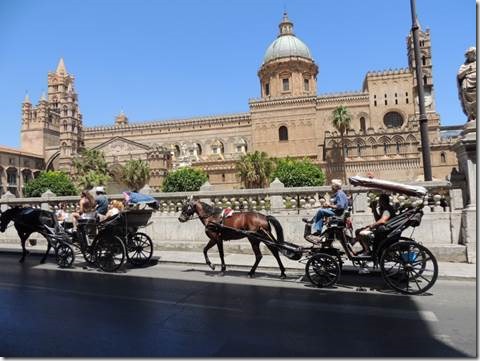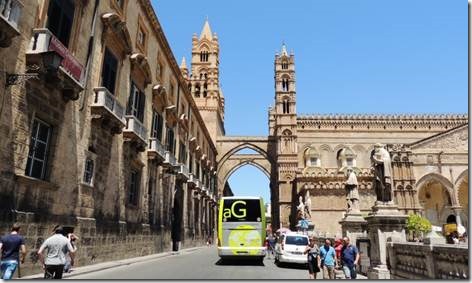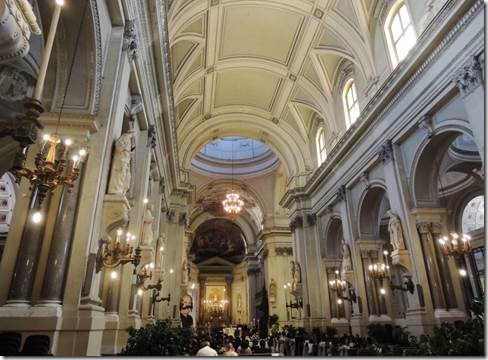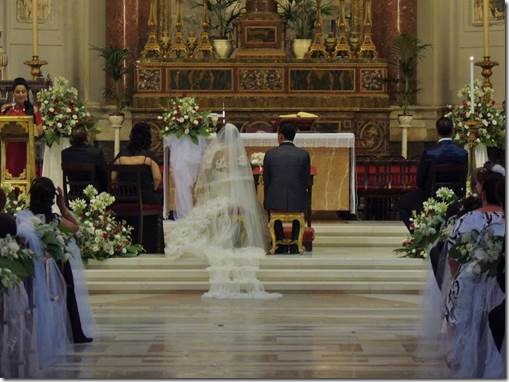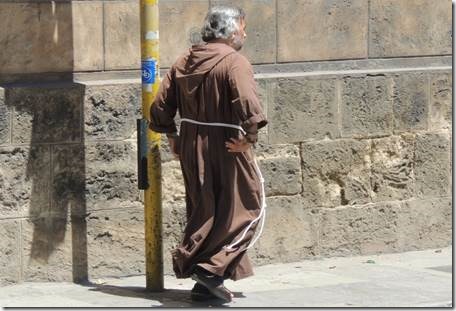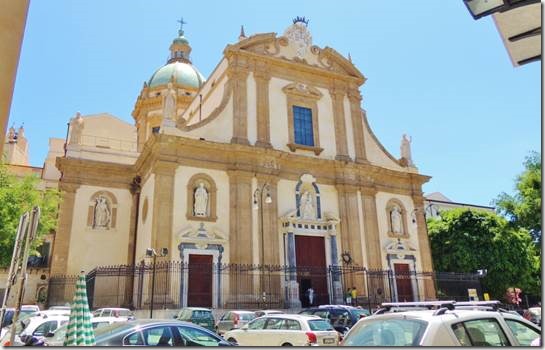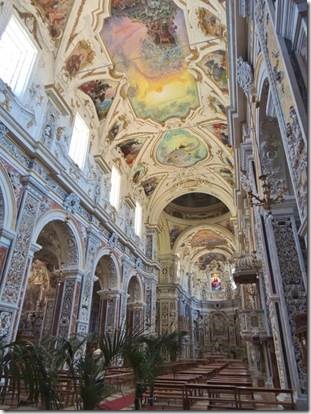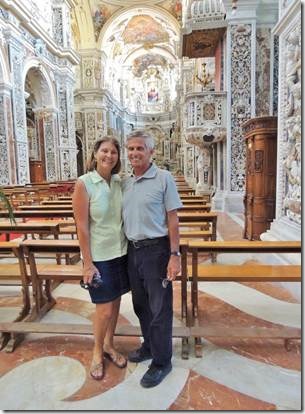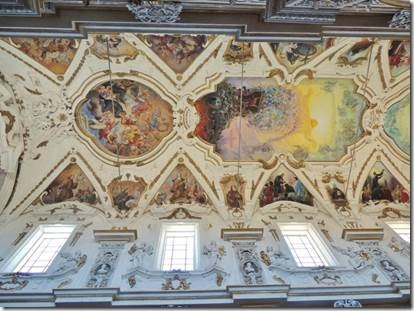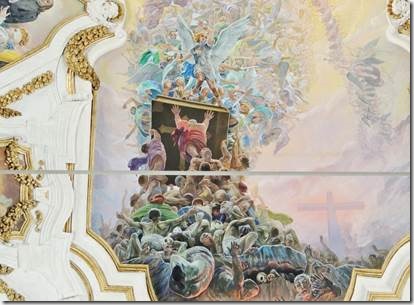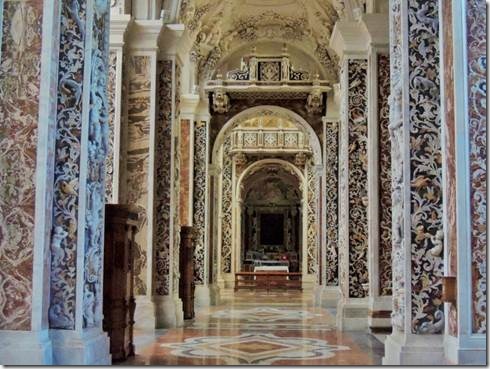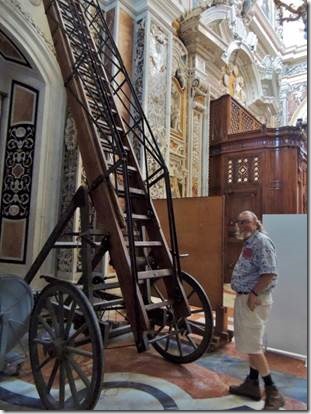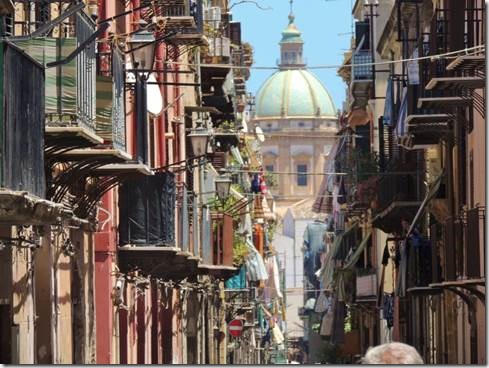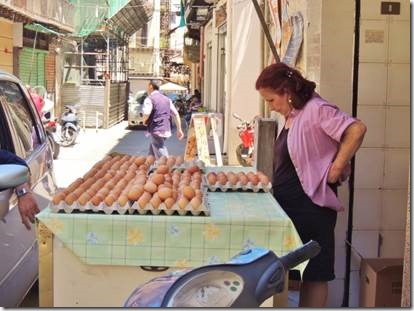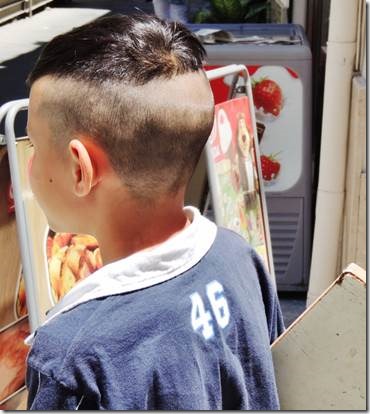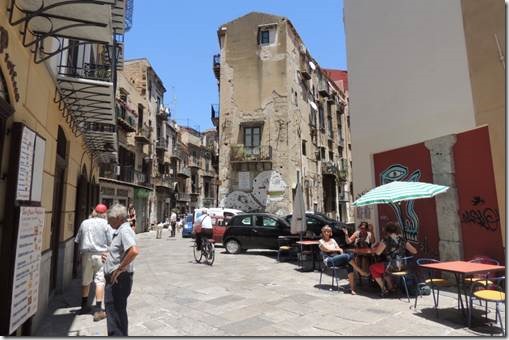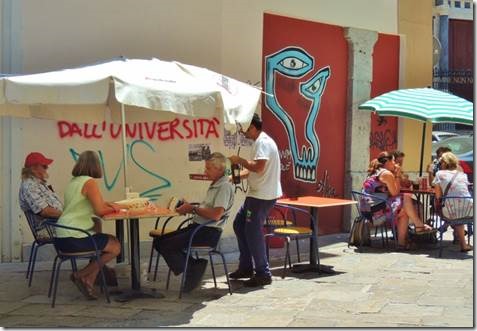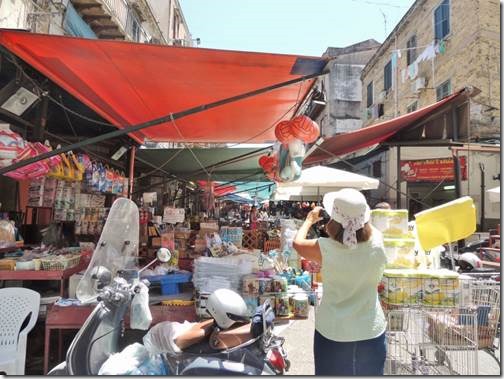Ciao
My OmniaCom Italia prepaid Internet connection stopped working this morning. I bought it to download some video for my sister and to finish writing these Palermo emails. We still have time on our dongle but that means sharing and you know how that sometimes goes. The prepaid card was for a week. It worked just fine Friday when I bought it and Saturday too. Today nothing. Maria in the office checked and the system seems to be down. Apparently the ItaliaCom office is closed Sunday so no help there. So it goes and back to sharing.
Ru
Palermo Cathedral and the Gesu
We hadn’t planned to visit the Palermo Cathedral; but it happened to be on our way to the Cappella Palatina so we paid our 1 Euro entrance fee and went in. Most churches were 1 or 2 Euro.
“The Duomo (Cathedral) of Palermo, Sicily, is an impressive 12th-century cathedral encompassing a wide variety of architectural styles.
In 1184, during Sicily’s Norman period, Archbishop of Palermo Gualtiero Offamiglio founded the cathedral on the site of a Muslim mosque, which had itself been built over an early Christian basilica.
The archbishop’s main aim was to surpass the glory of the magnificent cathedral of nearby Monreale, and the Palermo Duomo became an architectural battleground for "The Battle of the Two Cathedrals." For most visitors, Monreale Duomo remains the winner, but Palermo’s cathedral is still well worth a visit.
Many additions were made to the original Norman structure over the years. The exterior was "Gothicized" in the 13th and 14th centuries, and the Spaniards made their mark in the 15th century.
But if anyone could be called the culprit for the cathedral’s playground of styles, it is the Neapolitan architect Ferdinando Fuga, who went with the mood of his day and in 1771 and 1809 gave both the exterior and the interior of the Duomo a sweeping Neoclassical style. The only section that the restorers didn’t touch were the apses, which still retain their impressive Geometric decoration.
As is to be expected given its history, the most prominent characteristic of the Duomo is its many architectural styles. The exterior shows the development of the Gothic style from the 13th to 14th centuries.
The south porch (1453) is a masterpiece of the Catalan style, and at the apse end, sturdy Norman work can be seen through a decorative Islamic-inspired overlay.
The facade is closed between two soaring towers with double lancet windows. The middle portal, dating from the 15th century, is enhanced by a double lancet with the Aragonese coat-of-arms.
The four impressive campaniles (bell towers) date from the 14th century, the south and north porches from the 15th and 16th centuries, and the dome from the 18th-century.
Inside, the Duomo is a royal pantheon, sheltering many tombs of Sicily’s kings. The first chapel on the right contains six of the most impressive tombs, including that of Roger II, the first king of Sicily (d. 1154). He was crowned in the Duomo in 1130.
Squeezed into an enclosure by the south porch are the remains of Roger’s daughter Constance (d. 1198) and her husband, Henry VI (d. 1197). Henry VI was emperor of Germany and the son of Frederick Barbarossa. Also buried here is their son, Frederick II (d. 1250), also emperor of Germany and king of Sicily, and his wife, Constance of Aragón (d. 1222). The last royal burial here, of Peter II, king of Sicily, was in 1342.
Accessed from the south transept, the Treasury (Tesoro) is a repository of rich vestments, silverware, chalices, holy vessels, altar cloths, and ivory engravings of Sicilian art of the 17th century.
A highlight of the Treasury’s collection is the 12th-century cap-like crown of Constance of Aragon, which was removed from her head when her tomb was opened in the 18th century. Other precious objects removed from the royal tombs are also on display here.
http://www.sacred-destinations.com/italy/palermo-duomo
|
Cathedral and Bell Tower |
|
Huge |
|
Ghost bride: most of her fades into the gold cloth leaving only a cloud of lace next to the groom. As this wedding was taking place we didn’t feel as if we could just go traipsing around taking photos getting in the way or interfering with the service. And for all of the hoopla about the place I found other churches more appealing. Even the one in Licata had more instant charm. I think this one needed way more time and a real tour. My Sicily book only included photos of the outside so that tells you something about the interior. |
|
Couldn’t resist |
|
Chiesa del Gesù" or Casa Professa The "Chiesa del Gesù" (Church of Jesus), also known as Casa Professa is Baroque masterpiece located in Palermo’s Alberghieria quarter near the Quattro Canti. The Jesuits built the original church here, the Order’s first one in Palermo, between 1564 and 1578. Afterwards, the Church was enlarged with the addition of side chapels and further decorated in the Baroque manner. When it was finally completed in 1634, the Church was Palermo’s most ornate Baroque church, and still is. Interestingly enough, a great part of the work here was done by Jesuit priests themselves and not by commissioned artists. The Baroque was the architectural embodiment of the Counter Reformation’s ideals, its answer to the simplicity stressed in most Protestant places of worship. Its ornate stone inlay (intarsia) is the church’s most distinguishing artistic feature. Casa Professa was damaged during World War II, but was superbly restored following that conflict. It is open most mornings from 7 until 10:30 and most afternoons from 5 to 6:30. Nearby is the Ballarò street market and the medieval Church of San Nicolò. The market, and its very name, dates from Arab times. http://www.bestofsicily.com/4canti.htm |
|
Streets leading to the Gesu |
|
The egg landmark… These same eggs were there the next day and a local heard us noting that and said they’d been there for hundreds of years. |
|
A popular hair style for the bigger guys too; I wanted to ruffle the longer hairs but settled for a photo. |
|
Lunch…pasta and panino just a down the street a bit from the Gesu. In Italy, panino is the word for a sandwich made from bread other than sliced bread, in which case Italians call it a tramezzino….according to Google. |
|
One of the many examples of graffiti |
|
The market that surrounds the Gesu Once maybe there were artisans, but now it’s mostly plastic and fruits and veggies. This was our first visit but we came again the next day and really wandered through. |

